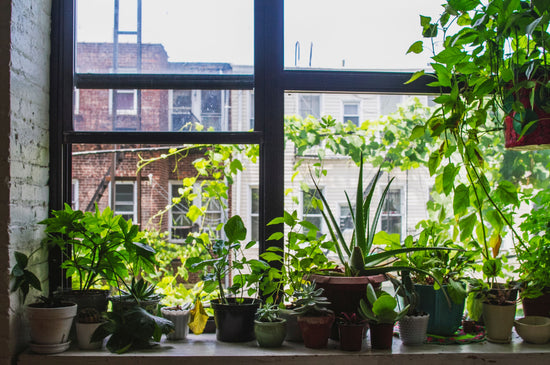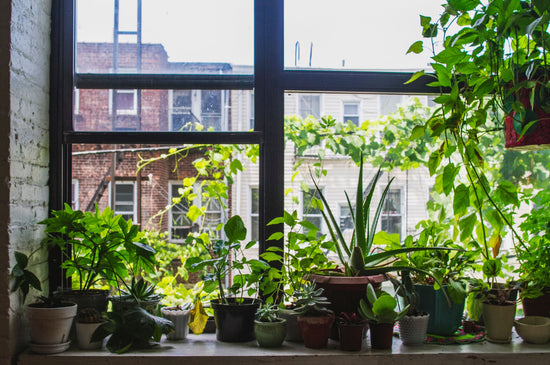10 Essential Tips for Winter Houseplant Care You Can’t Ignore
As the seasons shift and temperatures drop, houseplants face unique challenges that can impact their growth and vitality. Winter brings shorter days, drier air, and fluctuating indoor temperatures, all of which require adjustments to your plant care routine. Here’s a detailed guide with essential tips to ensure your houseplants thrive during the colder months.
Understanding the Challenges of Winter for Houseplants
Winter poses several obstacles for houseplants, including:
- Reduced sunlight: Shorter days and weaker sunlight reduce the energy available for photosynthesis.
- Dry indoor air: Heating systems lower humidity levels, which can lead to dehydration, especially for tropical plants like the peace lily and philodendron.
- Temperature fluctuations: Drafts from windows or doors can expose plants to sudden cold air.
- Dormancy: Many houseplants slow their growth during winter and require less water and nutrients.
Knowing these challenges helps you tailor your care routine to meet your plants’ needs.
1. Relocate to the Right Spot
Move your plants to areas with stable temperatures and ample light. Keep them away from drafty windows, doors, and heat sources like radiators. For light-loving plants like the zebra-striped succulent, place them near a south-facing window to maximize sun exposure.
2. Adjust Watering Practices
Overwatering is the most common mistake during winter. Dormant plants, such as the Lifesaver Plant and Huernia Cactus, require less water. Always let the top inch of soil dry out before watering and reduce the frequency to avoid root rot.
3. Increase Humidity
Dry air from indoor heating can stress plants. Use a humidifier or place water trays with pebbles near humidity-loving plants like the zz plant and pothos. Grouping plants together can also create a microclimate that boosts moisture levels.
4. Supplement Light
For plants that require bright light, consider using grow lights. They can provide the necessary energy for photosynthesis, especially for varieties like the star-shaped flower cactus or christmas cactus.
5. Dust and Clean Leaves
Dust accumulation on leaves can block light absorption. Use a damp cloth to gently clean the leaves of plants such as the spider plant or zanzibar gem plant. Clean leaves also make it easier to spot pests.
6. Reduce Fertilizer Use
During winter, most houseplants are dormant and do not need regular feeding. Over-fertilizing can harm your plants. Resume feeding in spring when growth becomes active again.
7. Monitor Temperature Fluctuations
Use draft stoppers or thermal curtains to protect plants near windows. Ensure pots are not directly touching cold windowpanes. Hardy plants like the snake plant can tolerate mild fluctuations, but sensitive plants may need extra care.
8. Prune Dead or Yellowing Leaves
Remove any dead or damaged foliage to prevent the spread of diseases and pests. Pruning also redirects energy to healthier parts of the plant, encouraging stronger growth.
9. Avoid Repotting
Winter is not the ideal time to repot houseplants, as they are in a dormant phase. Wait until spring when growth resumes to minimize stress on the plant.
10. Observe and Adapt
Regularly check your plants for signs of stress, such as wilting or yellowing leaves. Adjust care routines as needed to address these issues promptly.
Winter-Proof Houseplants for Beginners
If you’re new to plant care, consider starting with hardy houseplants that tolerate winter conditions well:
- Snake Plant: Low-maintenance and thrives in low light.
- ZZ Plant: Drought-tolerant and resilient.
- Pothos: Easy to grow and adapts to various environments.
- Spider Plant: Ideal for low humidity and forgiving of neglect.
- Christmas Cactus: A winter bloomer that adds seasonal charm.
These plants require minimal care and can withstand winter’s challenges, making them perfect for busy or novice plant owners.
A Few Extra Tips for Plant Enthusiasts
- Rotate your plants every few weeks to ensure even light exposure.
- Use room-temperature water for watering to avoid shocking the roots.
- Add a layer of mulch to the soil surface to help retain moisture.
Frequently Asked Questions
How do I know if my plant needs water during winter?
Check the top inch of soil; if it feels dry, water sparingly. Avoid overwatering as it can lead to root rot.
What’s the best way to increase humidity for my houseplants?
Use a humidifier, group plants together, or place a tray of water with pebbles near your plants.
Can I use grow lights for all types of houseplants?
Yes, grow lights can supplement natural light for most plants, especially during the darker winter months. Choose lights with a spectrum that mimics natural sunlight.
Why are my houseplant’s leaves turning yellow?
Yellowing leaves can be a sign of overwatering, lack of light, or low humidity. Assess and adjust your plant care routine accordingly.
Should I prune my houseplants during winter?
Light pruning to remove dead or damaged leaves is fine, but avoid heavy pruning until spring when growth resumes.
By following these tips, your houseplants can remain healthy and vibrant throughout the winter season. Whether you’re caring for a lush philodendron or a resilient zamioculcas plant, adapting to their needs will ensure a thriving indoor garden. For more houseplant essentials, explore our collections at Wekiva Foliage.





